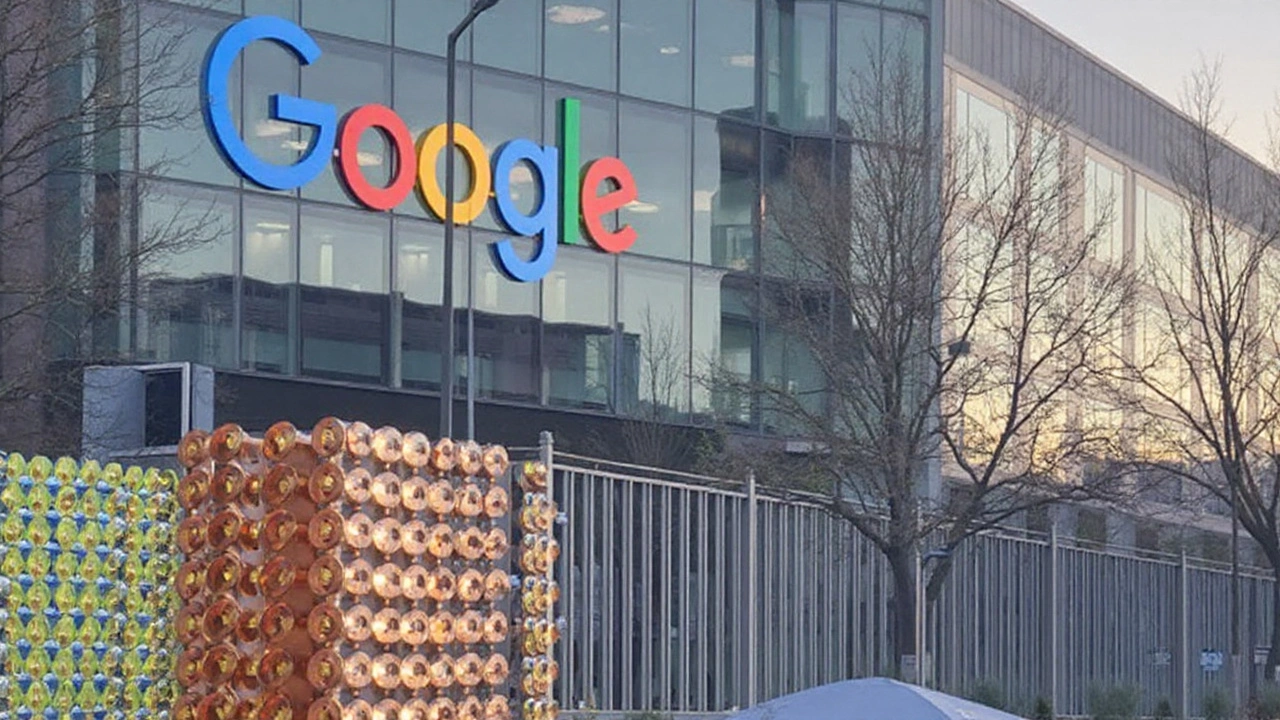Alphabet just crossed the $3 trillion mark, a milestone only a handful of companies have ever touched. The move reflects two things happening at once: a broad market hunger for anything tied to artificial intelligence, and a concrete shift inside Google’s business as it pushes AI into search, ads, YouTube, and the cloud. It’s not a meme rally. It’s a statement that investors think Google’s AI plan is starting to work.
A $3 trillion club with a different playbook
Apple and Microsoft got to this altitude by owning distribution and cash flow. Alphabet’s pitch is similar, but with a twist: search-scale data and compute, plus AI stitched into products billions already use. Advertising still pays most of the bills. YouTube and Cloud provide the growth lanes. AI is the thread running through all three.
On the ad side, Google has leaned on automation for years, but the latest tools are more generative than optimization. Retailers can create product assets on the fly. Travel and local ads increasingly use AI to match intent to inventory. YouTube is pushing formats and targeting built on the same stack, while Shorts monetization keeps improving. None of this is hype; it’s revenue tied to AI-driven performance.
Google Cloud is the clearest “AI now” story. Enterprises want model hosting, fine-tuning, vector databases, and secure data pipelines, and they want them managed. Vertex AI, managed Kubernetes, and high-performance infrastructure (Nvidia GPUs and Google’s own TPUs) have turned Cloud from a perennial loss-maker into a profitable segment in recent quarters. The demand is straightforward: companies don’t want to assemble an AI stack from scratch.
Under the hood, Alphabet is spending aggressively on data centers and chips. Training frontier models and serving AI features to billions is compute-heavy and not cheap. But scale matters: Google designs its own TPUs, runs some of the world’s busiest data centers, and can amortize costs across Search, YouTube, Android, and Workspace. That scale is why investors are willing to look past the capex spike.
Shareholder math also helps. Alphabet has tightened operating costs, expanded margins, and returned more cash through buybacks. It even added a regular dividend in 2024—small by big-tech standards, but a signal of confidence. When you combine steadier profits with a credible AI path, you get a multiple the market is comfortable paying.
- Core search and YouTube ads are holding up as AI tools boost relevance and creative output.
- Google Cloud is capturing AI workload demand with managed services and custom silicon.
- Gemini AI is built into products people use daily, creating instant distribution.
- Capex is surging, but scale and infrastructure know-how keep unit costs trending down over time.
The valuation also reflects a portfolio approach to AI. Not every bet will land. Some features will miss, get fixed, or get pulled. But Alphabet can test across a massive surface area—Search, Chrome, Android, Maps, YouTube, and Workspace—then double down where users respond.

Gemini’s distribution edge—and the risks that come with it
OpenAI’s ChatGPT set the tone for the consumer chatbot boom. Google’s counter has been momentum by integration. Gemini is not just a standalone app; it’s layered into Android (think on-screen assistance and Circle to Search), woven into Gmail and Docs for drafting and summarizing, and present inside Chrome for coding and research. Many users meet Gemini without ever visiting a separate chatbot site.
That distribution is Google’s superpower. If you run the browser, the phone OS, the productivity suite, and the world’s top search engine, you don’t need to beg for attention—you’re already there. When Google flips a default or adds a sidebar, adoption happens at scale. Early data from analytics firms and app rankings has shown steady usage growth for Gemini as these integrations roll out globally.
Search is the most sensitive experiment. AI Overviews change how people discover information, and they’ve sparked strong reactions from publishers and the open web. Some welcome better answers. Others worry about traffic being siphoned from sites that create the content. Google is tweaking the product, adding guardrails, and adjusting when AI answers appear, trying to balance helpfulness with ecosystem health. The stakes are high: search still funds the house.
Quality and safety remain the constant challenge. Large models can hallucinate, drift into biased or unsafe outputs, or produce images that miss cultural context. Earlier this year, Google paused parts of its image generation after accuracy problems and resumed only after changes. Expect more of that cycle—launch, learn, patch—because putting AI into mainstream apps means problems show up fast and publicly.
On the enterprise side, Gemini in Workspace is becoming a paid layer. Companies are buying AI seats to handle email triage, meeting notes, document drafting, and spreadsheet analysis. It’s everyday productivity, not science fiction, and CIOs care about two things: reliable outputs and no data leaks. That’s where Google pitches data isolation, admin controls, and compliance. Cloud customers, meanwhile, want flexibility: their own data, their chosen models, Google’s tooling and security. Vertex AI’s promise is exactly that.
Competition is fierce. Microsoft is driving Copilot into Windows and Office with the same distribution logic. OpenAI keeps shipping faster models and tools. Meta is pushing open-source models that developers can self-host and tune. Amazon is bundling models through Bedrock and backing startups in the space. Apple has started rolling out on-device and private cloud AI for iPhone and Mac. No one is standing still.
Alphabet’s answer is to be multi-modal and everywhere. The company is building models that handle text, images, audio, video, and code in a single system, and then breaking that capability into product-sized chunks. It’s not just about chatting—it’s about agents that take actions: book the trip, generate the video, clean the dataset, draft the brief, file the ticket. The more useful those agentic tasks become, the stickier the platform.
There are real costs. Training and serving frontier models burn energy, water, and cash. Google says it’s working toward 24/7 carbon-free energy by 2030 and is signing long-term clean power deals near its new data centers. Still, grid constraints and local water use will face scrutiny. Investors are watching how fast unit economics improve as hardware generations turn over and as Google leans on custom TPUs.
Regulation is the other shadow. In the U.S., a major antitrust case targets Google’s search distribution deals. The EU’s Digital Markets Act forces product changes, including choice screens and new data boundaries. Globally, copyright fights over training data are still being sorted out, and licensing deals with publishers and media companies are evolving. Each step affects how fast and where Google can roll out AI features.
So why did the stock move enough to clear $3 trillion now? Because the story lines converged. Ads didn’t crack. Cloud kept growing and stayed profitable. New AI products are shipping in core apps, not just demos. And management is pairing big AI bets with cost discipline and shareholder returns. That combination earns time—and a premium.
The bar, though, is higher from here. $3 trillion implies that Google must turn AI features into durable, high-margin businesses while keeping regulators, developers, and publishers onside. It must scale compute without ballooning costs. And it has to keep quality high across products used by billions. If Gemini makes everyday tasks faster and more accurate, and if Cloud keeps winning AI workloads, the valuation holds. If not, gravity returns quickly.
Watch for a few markers over the next year: how often AI Overviews appear in Search and how that affects publisher traffic; uptake of paid AI tiers in Workspace; Cloud’s AI-related revenue disclosure and margins; capex cadence and supply of GPUs and TPUs; and whether Android’s on-device AI features become must-haves. Those signals will tell you whether this $3 trillion moment was a peak—or just a stop on the way.
